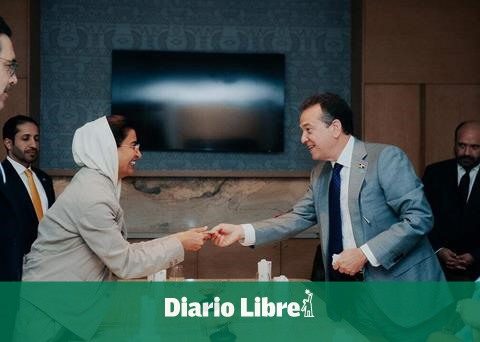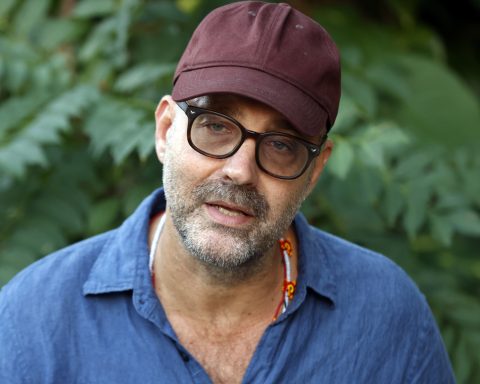“Rolando Rivas, taxi driver”, an emblematic, popular, romantic and markedly Buenos Aires telenovela, which with the master pen of Alberto Migré intertwined various stories with the love knot of the central couple, Claudio García Satur and Soledad Silveyra, celebrates this Monday, March 7 50 years since its first broadcast.
Those were times when Argentine television was looking for new forms for its fiction thanks to a technology that made it easier to leave the studio sets and find an infinite stage in the City of Buenos Aires, conducive to the imagination of master Migré, a storytelling magician. like few.
In fiction, Rolando was a porteño with a big heart who lived in the neighborhood of Boedo, traveled the streets with his vehicle and was dating a seamstress girl (Mabel Landó) closely watched by his father (Antuco Telesca), until a afternoon a wealthy teenager, Mónica Helguera Paz (Soledad Silveyra), got into the car with her burden of anguish and arrogance.
At the height of “Rolando Rivas, taxi driver”, Migré had already given titles such as “Two to love each other”, “Your sad lie of love”, “Palmolive teletheater of the air”, “Your favorite comedy” and “My name is Julián, I I want” and ventured into television in Brazil
It is then that the love story of Rolando and Mónica explodes: from that moment passions intersect with differences of class and culture, with the consequence that the name Mónica Helguera Paz still resonates in the popular ear as a representative of the power and caprice.
That appendix of everyday life that is public transport, with its difficulties, gray stories and misadventures of any kind, showed that the plots could be developed outside the usual four walls in which social classes clashed, collided and merged. and the loves that arose in between.
Broadcast weekly on Channel 13, that episode of March 7, 1972 marked a milestone and a trend: it took advantage of the precedent of “Estación Retiro”, with Luis Dávila, Beatriz Día Quiroga and Susana Campos, launched a year earlier and was screened around 1978, when Claudio Levrino and Gabriela Gili performed “A World of 20 Seats”.
No case was as paradigmatic as that of “Rolando Rivas…”, none so remembered by the generations that followed him through those small black and white screens, because Migré had the advantage and the happiness of having practiced his job as radio writer since he was 15 years old, when he wrote a story for Chela Ruiz, and also being one of the pioneers of Argentine TV in the matter.
Already in 1962, when he was still writing for the microphone, he showed his virtues for the new medium in the cycles “Teleteatro Odol” and “Silvia dies tomorrow”, in the second case with the leading role of Nora Cullen and Atilio Marinelli; antecedents that served to cement “0597 is busy”, which in 1963 was, in his own version, the first soap opera to be broadcast in Colombia.
At the height of “Rolando Rivas, taxi driver”, Migré had already given titles such as “Two to love each other”, “Your sad lie of love”, “Palmolive teletheater of the air”, “Your favorite comedy” and “My name is Julián, I I want” and ventured into television in Brazil.
During his last years, loved and revered as the father of librettists, Migré was president of the General Society of Authors of Argentina (Argentores), from where he fought hard but without luck against the new ways of “manufacturing” scripts for soap operas, with a coordinator at the head and several anonymous scribes: he was a craftsman who designed the characters and their adventures and knew for sure where he wanted to take them.
The story of the “tachero”, which reached 40 rating points when only air TV existed, was broadcast on Tuesday nights and is considered the most successful and remembered telenovela on vernacular television
The story of the “tachero”, which reached 40 rating points when only over-the-air TV existed, was broadcast on Tuesday nights and is considered the most successful and remembered telenovela on vernacular television; the first that, given its resounding success, had a second season even at the cost of changing its female lead: Nora Cárpena went on to take the place of Silveyra, hired for another cycle on the same station.
It was also the first time that men were part of the loyal audience of a soap opera, which also included the colloquial language of Buenos Aires -previously almost prohibited and of which Migré was a promoter already in his radio days- and had references to social history and politics of the country, which in 1972 was far from peaceful.
In the last chapter of 1973, Migré appeared as an actor in the role of a taxi passenger, to repeat a situation that almost always triggered parallel stories or stories far from the leading couple, a modality that over the years was picked up and adapted in products of Polka and the like.

The original telenovela had other versions, including the 1988 version “Ella contra mí”, with Gustavo Garzón and Carolina Papaleo; and the Brazilian version in Portuguese “Antonio Alves, taxi driver”, recorded in Argentina.
In its second season (1973), “Rolando Rivas…” sends Monica on a trip and Natalia takes her place, a separated woman played by Nora Cárpena, who along with her little son seems to fill the life of the actor with happiness. taxi driver, because sometimes things must end well… Only Rolando can’t forget Monica, his lost love.
As success could not be wasted, “Rolando Rivas, taxi driver” was turned into a film in 1974 -when the public went to theaters to see in color the stories they knew in black and white- and there García Satur, whose character had been widowed , he met again with Solita Silveyra, now an airline stewardess, so that the passion would reignite.
The trade and the ear to capture the popular speech of Migré continued to bear fruit over the years; Some examples of this are “Orange Skin” (1975) with Arnaldo André, Marilina Ross and Fernanda Mistral; “El Rafa” (1980), with Alberto de Mendoza, Carlos Calvo and Alicia Bruzzo; “When you return to me” (1986), with Arturo Puig and Ana María Cores; “A voice on the telephone” (1990), with Carolina Papaleo and Raúl Taibo; and “Leandro Leiva, a dreamer” (1995), with Miguel Ángel Solá and Marita Ballesteros.















